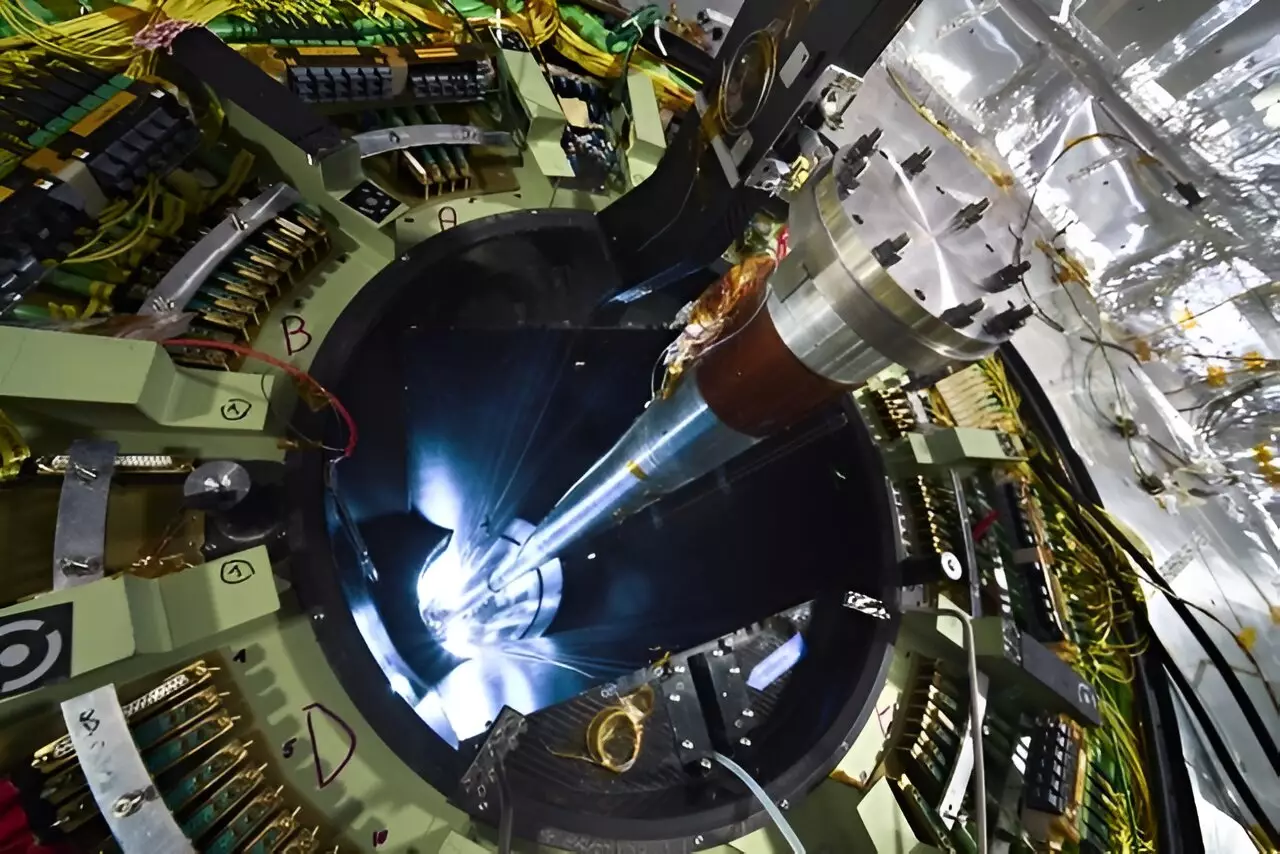In the intricate realm of particle physics, few concepts tantalize the scientific community as profoundly as magnetic monopoles. These theoretical particles are envisioned to possess a single magnetic pole, either north or south, fundamentally differing from traditional magnets that exhibit a dipole nature. Despite rigorous theoretical pursuits and experimental searches throughout the decades, these elusive entities remain unfound. Recent investigations conducted by a collaborative team, spearheaded by scientists from the University of Nottingham, have offered groundbreaking insights, enhancing the scrutiny of magnetic monopoles and narrowing the search parameters.
Utilizing a section of the decommissioned beam pipe from the Large Hadron Collider (LHC), the researchers engaged in a quest to ascertain the existence of magnetic monopoles. This distinctive choice of equipment is significant; the beam pipe has previously been subjected to the extreme conditions associated with the LHC’s high-energy collisions. Specifically, the MoEDAL (Monopole and Exotics Detector at the LHC) experiment capitalized on the unique properties of the beryllium beam pipe, long-forgotten yet positioned at the hub of extensive particle interactions, allowing for a potentially optimal environment for the formation of these magnetic anomalies.
The core premise of the research rests on the interaction of ultra-relativistic heavy ion collisions, which create magnetic fields of astonishing intensity—far surpassing those found in naturally occurring cosmic scenarios such as neutron stars. According to Oliver Gould, the lead theorist of the study, the extraordinary conditions of these collisions could stimulate the spontaneous generation of magnetic monopoles via the Schwinger mechanism, a phenomenon posited to occur under sufficiently strong electromagnetic fields.
Despite exhaustive analysis and significant ingenuity applied to their methods—including the utilization of superconductive magnetometers to detect the magnetic signatures indicated by the presence of monopoles—the team ultimately reported a lack of direct evidence for their existence. Nevertheless, the implications of their findings are manifold. The research yields unprecedented constraints on the mass of magnetic monopoles, ruling out the potential existence of monopoles lighter than 80 GeV/c², while defining upper limits for magnetic charge in the range of two to forty-five base units.
These outcomes not only refine previous understandings but also establish a new benchmark for future investigations into magnetic monopoles. The necessity for further trials is evident; as Oliver Gould poignantly indicated, employing more recent runs of the LHC where accelerations are heightened could potentially enhance their findings, doubling the experimental reach as researchers strive to unravel more profound mysteries of the universe.
The quest for magnetic monopoles transcends mere curiosity; it holds transformative potential for the foundational principles of physics. Upholding the theoretical framework established by physicists such as Paul Dirac and Joseph Polchinski, confirmation of monopoles could lead to revolutionary advancements in our understanding of electromagnetism and the Standard Model of particle physics. The existence of monopoles may lead to insights about the unification of forces and the intricate structure of the universe.
Throughout history, paradigm shifts in scientific thought have often stemmed from such groundbreaking discoveries. The pursuit of magnetic monopoles exemplifies the essence of scientific inquiry: a relentless quest for knowledge that often yields more questions than answers.
As the scientific community eagerly anticipates the continuation of explorations into magnetic monopoles, the recent findings at the LHC represent a critical juncture in this age-old quest. While the physical evidence remains elusive, the rigorous application of innovative methodologies marks a significant step forward. Armed with enhanced understanding and refined constraints, the collaborative efforts of physicists around the world remain steadfast. Whether or not magnetic monopoles will one day be confirmed, the endeavor itself enriches our comprehension of nature and the very fabric of existence, reaffirming that the journey to understanding is, indeed, just as crucial as the destination.


Leave a Reply